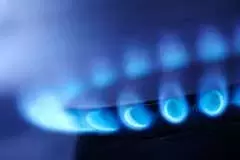The U.S. natural gas market has been on a rollercoaster ride, with prices surging nearly 10% on Monday as weather forecasts pointed to a pickup in heating demand. Analysts have also attributed the gains to likely short-covering, suggesting a complex and dynamic landscape for investors and industry players alike.
Unlocking the Potential of the Natural Gas Market
Heating Demand Drives Price Surge
The recent surge in natural gas prices can be attributed to a shift in weather patterns, with forecasts indicating a pickup in heating demand. As the colder weather sets in, the demand for natural gas to heat homes and businesses has increased, putting upward pressure on prices. This development has been a significant factor in the market's volatility, as traders and investors closely monitor the impact of weather on consumption patterns.Analysts have noted that the appearance of colder weather has "allowed the crushing weight from a historically" high natural gas inventory to be lifted, paving the way for the price surge. The reduction in the oversupply of natural gas, coupled with the increased demand for heating, has created a more favorable market environment for producers and traders.Short-Covering Sparks Gains
In addition to the weather-driven demand, analysts have also pointed to likely short-covering as a contributing factor to the recent price gains. Short-covering occurs when traders who have previously sold short, or bet on a decline in prices, are forced to buy back the contracts to close their positions, leading to a surge in demand and upward pressure on prices.This dynamic has been a common feature in the natural gas market, as traders and investors navigate the complex interplay of supply, demand, and market sentiment. The short-covering activity suggests that some market participants may have been caught off guard by the unexpected price movement, leading them to scramble to cover their positions and further exacerbate the price rally.Volatility and Uncertainty in the Natural Gas Market
The natural gas market has long been characterized by its volatility, with prices often fluctuating significantly in response to a variety of factors, including weather patterns, geopolitical events, and changes in supply and demand. This volatility can present both opportunities and challenges for investors and industry players, who must carefully monitor and adapt to the shifting market dynamics.One of the key challenges in the natural gas market is the inherent uncertainty surrounding future demand and supply. Factors such as economic growth, technological advancements, and regulatory changes can all have a significant impact on the market, making it difficult for participants to accurately predict and plan for future scenarios.Navigating the Complexities of the Natural Gas Market
To navigate the complexities of the natural gas market, industry players and investors must adopt a multifaceted approach. This may involve closely monitoring weather forecasts, analyzing supply and demand trends, and staying informed about regulatory and geopolitical developments that could affect the market.Additionally, diversification and risk management strategies can be crucial in mitigating the impact of market volatility. Investors may consider diversifying their portfolios across different energy sources or exploring hedging strategies to manage their exposure to natural gas price fluctuations.Furthermore, collaboration and information-sharing among industry participants can help to enhance market transparency and facilitate more informed decision-making. By working together, stakeholders can gain a deeper understanding of the factors driving the natural gas market and develop more effective strategies for navigating its complexities.As the natural gas market continues to evolve, the ability to adapt and respond to changing conditions will be essential for those seeking to capitalize on the opportunities and manage the risks inherent in this dynamic and influential sector.You May Like

